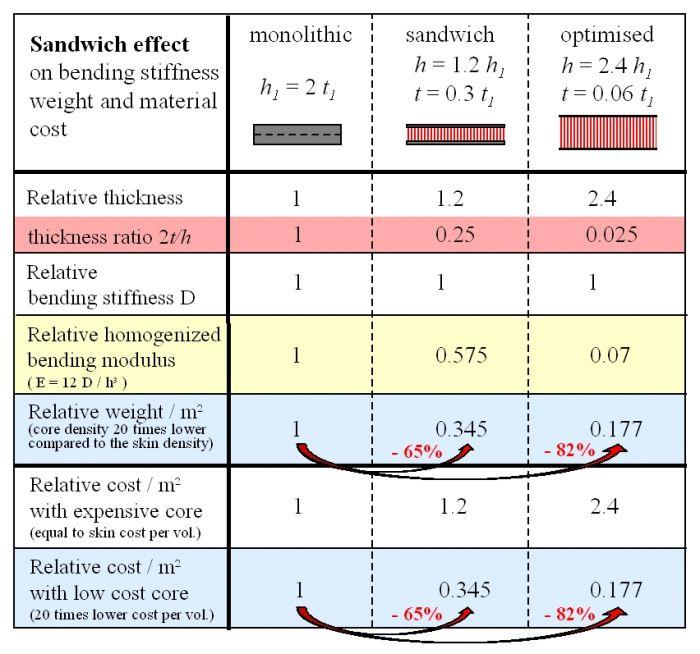The economic advantage of low cost core materials
The table shows the effect of the sandwich concept on bending stiffness, panel weight and panel material cost. For this simple comparison the core density is assumed to be 20 times lower than the density of the skin material, which is commonly reached in honeycomb sandwich construction.
Two sandwich examples show the positive effect of the sandwich height on the bending stiffness. Only 1.2 times the height allows to reach the bending stiffness a monolithic panel with only 30% of the amount of skin material compared to a monolithic panel. The "optimized" sandwich example in the last column of the table shows that only 6% of skin material can be sufficient to reach the same bending stiffness. The lower amount of skin material allows not only weight reductions, but also substantial cost reductions if a low cost core material is used.
The two lowest rows of the table present a comparison of the relative cost per m² based on material cost with an expensive core and a low cost core. For the expensive core material costs per weight are assumed to be 20 times higher than the cost per weight of the skin material. Since our exemplary core material has a 20 times lower density this results in equal cost per volume for core and skin material. For the low cost core, the material costs per weight are assumed to be equal to the cost per weight of the skin material. The relative cost per m², based only on cost per m² of the core and skin materials, compared to the monolithic panel show the large effect of the core material cost.

